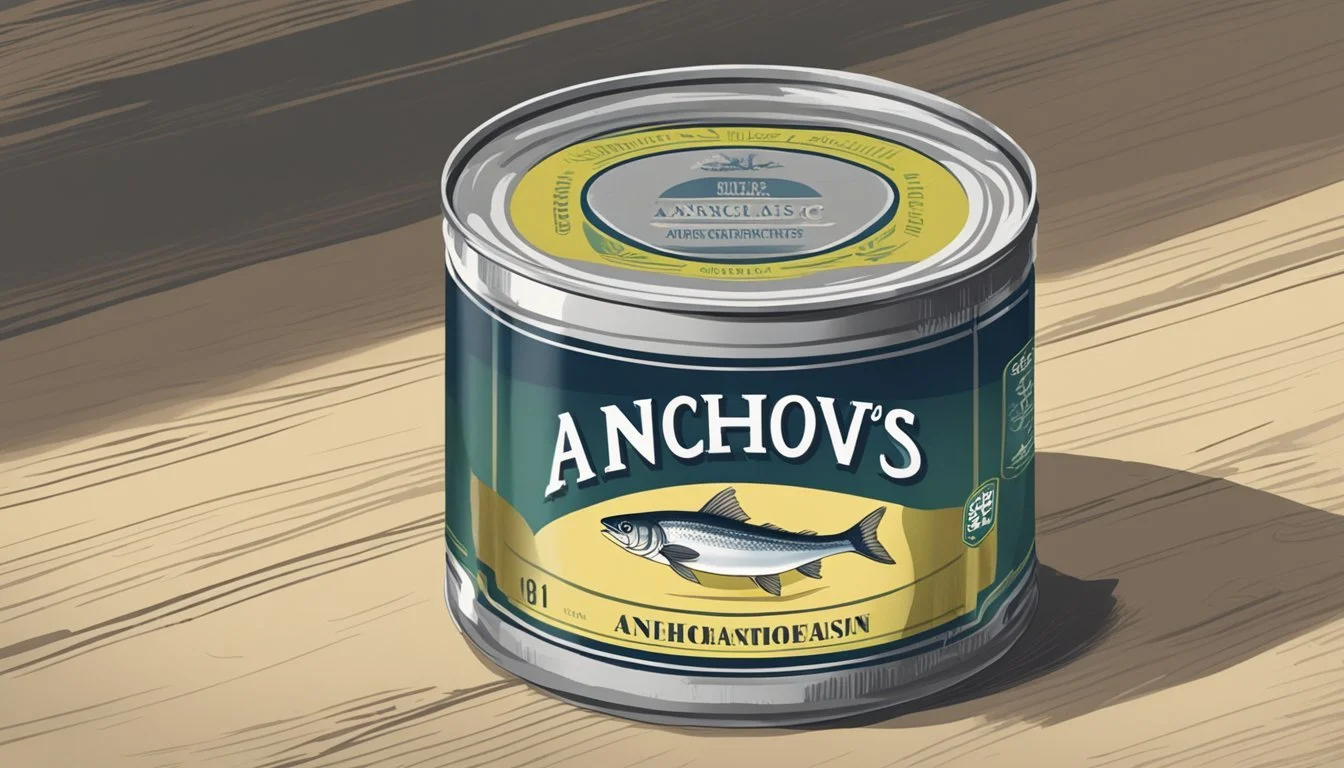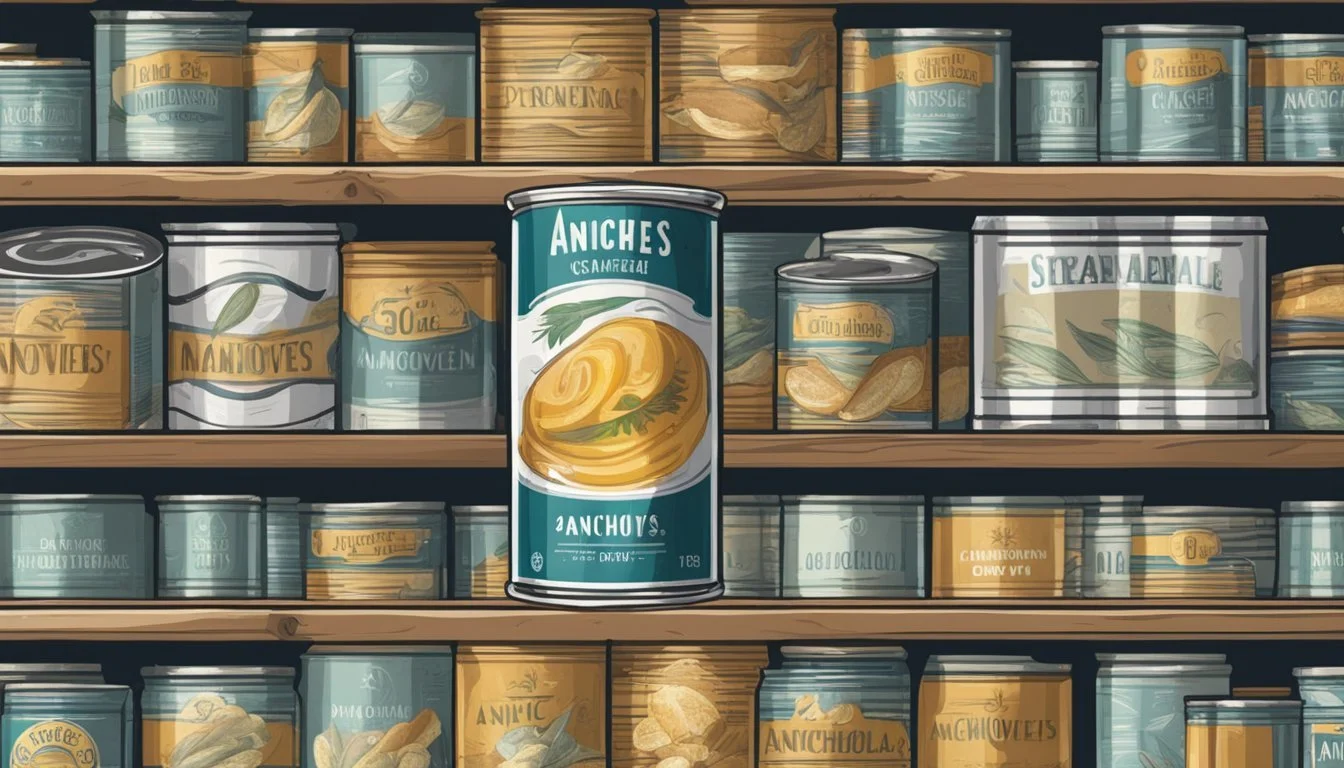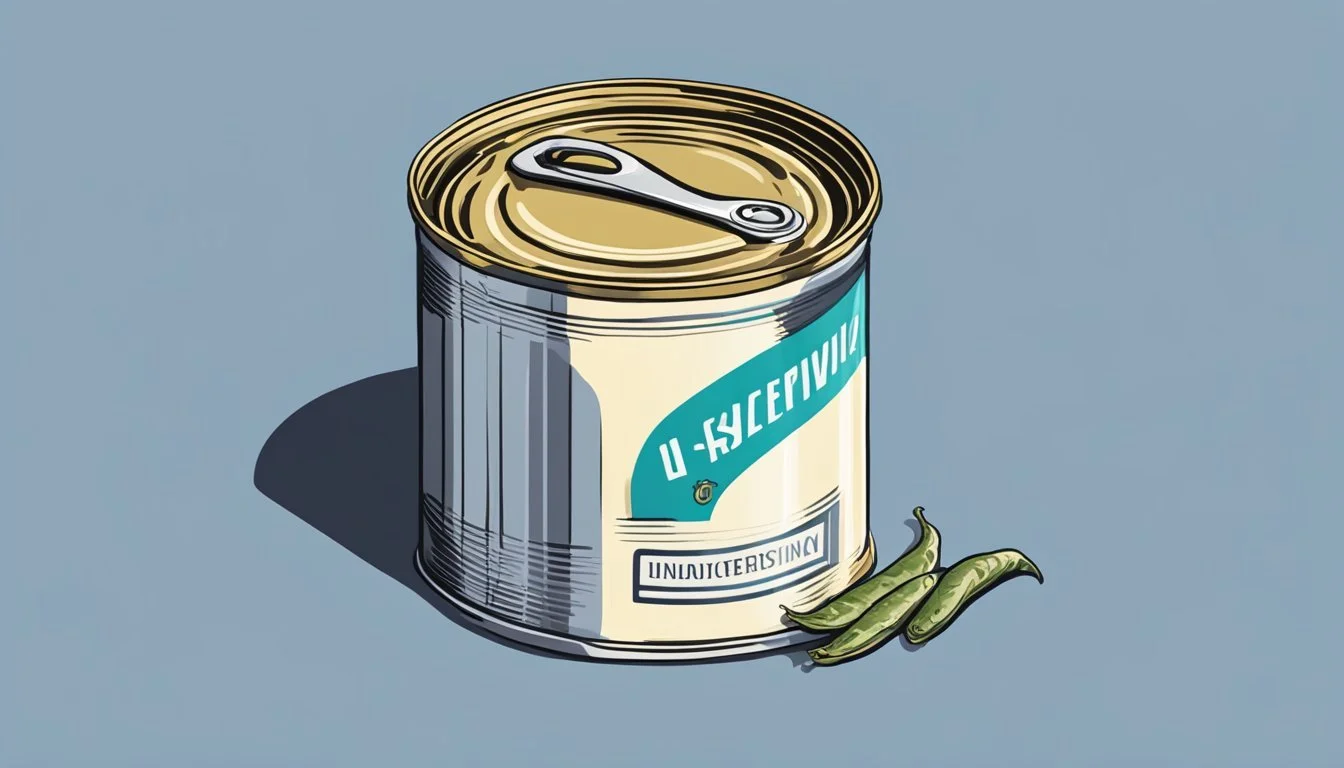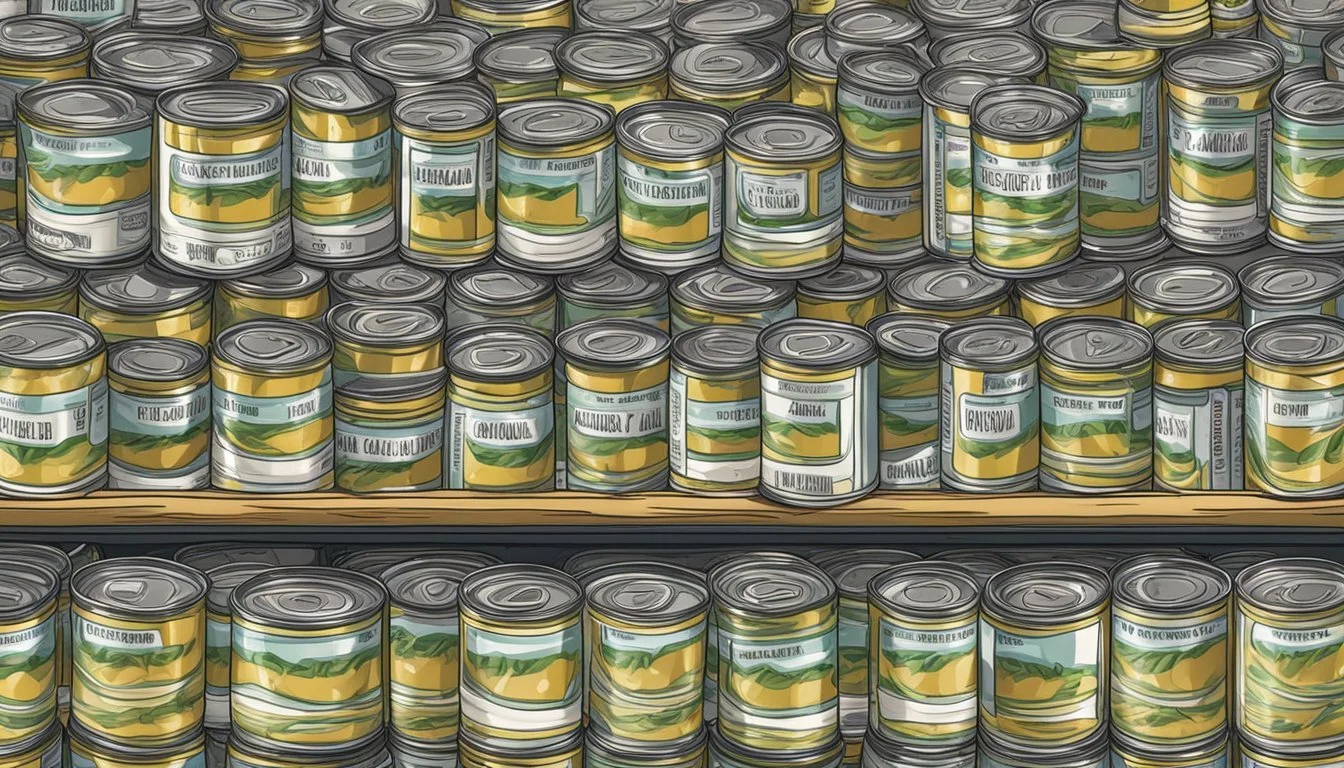How Long Do Canned Anchovies Last?
Shelf Life and Storage Tips
Canned anchovies (What wine goes well with anchovies?) are a staple in many pantries, prized for their ability to impart umami flavor to a variety of dishes. Their longevity on the shelf makes them a convenient ingredient to have on hand for culinary use. When unopened, canned anchovies can last for several years. Typically, they maintain their best quality for one to two years when stored in a cool, dry place, though many sources suggest that they can be kept for up to three to five years under ideal conditions.
Once the can is opened, the shelf life of anchovies decreases significantly. To maximize their freshness post-opening, anchovies should be kept in the refrigerator. In a sealed container, possibly submerged in oil, they can last for up to two months. This truncated shelf life is due to their exposure to air and potential contaminants, which can lead to degradation in quality and flavor.
It's important for consumers to note that the "best by" or "use by" dates are merely indicators of optimal quality suggested by the manufacturer. Canned goods may often be safe to consume beyond these dates if they have been stored properly and the can remains undamaged. However, it's always prudent to inspect the contents for any signs of spoilage before use.
Understanding Canned Anchovies
Canned anchovies are preserved in salt and oil, which are key to their long shelf life and distinctive flavor. They are commonly used to enhance the taste of various culinary dishes.
Anatomy of a Canned Anchovy
Canned anchovies are small, silvery fish that are deboned, filleted, and preserved. These fillets are typically layered in a can with either salt or oil to prevent spoilage. The high salinity and oily environment create an inhospitable space for bacteria, enabling the anchovies to last for an extended period without losing quality. Here's a breakdown:
Fish: Small, forage fish from the Engraulidae family.
Quality: High, when properly stored.
Taste: Intense, savory umami flavor characteristic of aged seafood.
Storage: Salt and oil act as preservatives.
Culinary Uses
Canned anchovy fillets are a versatile ingredient in the culinary world, cherished for their ability to add a robust depth of flavor to dishes. Whether finely chopped and melted into sauces, or laid atop pizzas and salads, their savory taste is a cornerstone in Mediterranean and European cuisine. Here are some common uses:
Sauces: Caesar dressing, puttanesca, and Bagna càuda.
Pizzas: As a topping, often paired with other bold flavors.
Salad: Caesar salad and other salads for an umami boost.
Sandwiches: Layered in for enhanced flavor.
Tapas (What wine goes well with tapas?): Served on crostini or as part of antipasto plates.
The fillets are known for imparting a complex flavor profile that can elevate the overall taste of a dish with just a small amount.
Storage Fundamentals
Proper storage is crucial for maintaining the quality and safety of canned anchovies. Whether unopened or opened, anchovies require specific conditions to ensure they last for their expected shelf life.
Storing Unopened Cans
Unopened cans or jars of anchovies should be stored in a cool, dry place, away from direct sunlight and heat sources. Ideal storage conditions include:
Temperature: Room temperature is sufficient, typically between 50°F to 70°F (10°C to 21°C).
Environment: A pantry or a cupboard away from the stove or heat-generating appliances.
Under these conditions, unopened canned or jarred anchovies can last for 3 to 5 years. However, one should always check the expiration date on the package for the most accurate information.
Storing Opened Anchovies
Once opened, the leftover anchovies need to be handled with care to prevent spoilage. Follow these steps:
Transfer: Move the anchovies from the can to an airtight container to avoid tainting their taste.
Cover: If the anchovies are in oil, ensure they are fully submerged. For salt-packed anchovies, ensure all pieces are properly covered with salt.
Refrigerate: Store the airtight container in the fridge, ideally at temperatures at or below 40°F (4°C).
Here is a brief guideline on how to store opened anchovies:
Anchovy Type Container Type Storage Location Duration In oil Airtight container Refrigerated Up to 2 months Salt-packed Airtight container Refrigerated Up to 2 months
Following these protocols, refrigerated anchovies typically retain their quality for about 2 months. It's important to inspect the anchovies for changes in texture or odor before use, as these are indicators of spoilage.
Maximizing Shelf Life
When storing canned anchovies, it's essential to focus on maintaining their peak quality before and after opening. Proper storage can significantly extend their shelf life while ensuring they remain safe and flavorful.
Ideal Conditions
Temperature: Anchovies should be kept in a cool environment. Before opening, they can be stored at room temperature, but once opened, they need to be refrigerated.
Unopened Shelf Life: Commercially packaged anchovies have a shelf life of up to one year when stored in a cupboard.
Opened Shelf Life: Once opened, anchovies can last 1 to 2 months if stored correctly in the refrigerator.
Storage Methods:
Transfer contents to a glass or plastic container if originally in a tin can.
Ensure anchovies are submerged in oil or salt, as this creates an environment less conducive to spoiling.
Best By Dates: Consumers should note the "best by", "best before", "best if used by", or "best when used by" dates on packaging as an indication of peak quality.
Signs of Spoilage
Anchovies past their expiration date or not stored properly can display signs of spoilage. To determine if anchovies are spoiled:
Off Odor: A rancid or off odor is a clear sign that anchovies are no longer at their best.
Color and Texture: Look for changes in color, with scales turning grey or blue, or a noticeable alteration in texture.
Mold: Any visible mold growth indicates spoilage and that the product is not safe to consume.
It is important for health reasons to discard any anchovies that show signs of spoilage, as they are not safe to use and could cause foodborne illness.
Usage and Pairings
Canned anchovies are versatile in the culinary world, often providing a savory umami flavor to a variety of dishes. They are a staple in Mediterranean cuisine and are used to enhance the flavors in an assortment of recipes and sauces.
Incorporating Into Recipes
Canned anchovies can be finely chopped or mashed into a paste and incorporated into pasta sauces, such as a classic tomato sauce, to add depth of flavor. They dissolve easily when heated, becoming an integral part of the dish's overall taste profile rather than a distinct addition. In terms of pasta dishes, anchovy fillets can be sautéed with garlic and olive oil to create a simple yet flavorful spaghetti aglio e olio.
Pasta Dish Example:
Spaghetti Aglio e Olio: Sauté anchovies with garlic in olive oil until dissolved. Toss with cooked spaghetti, fresh parsley, and red pepper flakes (how long do red pepper flakes last?).
In salads, particularly a classic Caesar salad, anchovies are a key ingredient in the dressing, complemented by the use of Worcestershire sauce (how long does worcestershire sauce last?), lemon juice, garlic, parmesan, and sometimes capers. (What wine goes well with capers?) The fillets can be emulsified directly into the dressing or layered over the greens for a bolder flavor.
Caesar Dressing Components:
2 anchovy fillets, mashed
1 teaspoon Worcestershire sauce
2 tablespoons lemon juice
2 garlic cloves, minced
1/2 cup grated Parmesan cheese
Caesar dressing mix: Blend ingredients until smooth.
Substitute Suggestions
When seeking substitutes for canned anchovies, select ingredients that mimic their unique savory notes. A good substitute is soy sauce (how long does soy sauce last?), which can bring a similar salty umami characteristic to dishes. Tapenade, an olive-based spread, can also replicate the briny, rich flavor in recipes that call for whole or filleted anchovies.
Substitute for 1 Anchovy Fillet:
1/2 teaspoon soy sauce
1 teaspoon olive tapenade
For those who do not prefer anchovies yet want to achieve a comparable taste profile in cooking, one can combine olives, capers, and tomatoes as these ingredients share similar taste qualities and contribute to the overall umami and complexity of the dish.
Preservation Techniques
Canned anchovies are a delicacy prized for their bold flavor, making proper preservation crucial for maintaining their taste and extending their shelf life.
Refrigeration Versus Freezing
Refrigeration after opening is essential for canned anchovies. Once the seal is broken, anchovies should be transferred to an airtight container if they are not already in one. They should then be kept refrigerated to ensure freshness. Typically, opened anchovies can last up to two months in the refrigerator if stored properly.
It is important to note that anchovies in oil may exhibit a grainy white residue; this is normal and does not indicate spoilage.
Freezing offers a longer-term solution. When anchovies are properly sealed in an airtight container, ideally covered with oil or their original packing substance, freezing can extend their usability. They can be frozen for up to six months, and this technique can be particularly helpful for those who do not intend to use the anchovies regularly.
Extending Usability Beyond Best By Date
The terms "best if used by," "best before," and "best when used by" indicate periods during which the product is expected to be at peak quality. For canned anchovies, these dates tend to be conservative estimates. If canned anchovies are commercially packaged and stored properly, their usability can often extend beyond these dates.
Refrigeration plays a key role in this extension, but no guidelines can ensure safety beyond the labeled dates. Consumers should rely on visual inspection and odor to determine usability: any sign of spoilage means the product should not be consumed.
Health and Nutrition
Canned anchovies are not only a flavorful addition to many dishes, but they also offer a range of health benefits. This section will provide detail on the nutritional value they bring and important safety considerations.
Nutritional Benefits
Anchovies are a potent source of protein, essential for muscle development and repair. A single serving typically contains about 9 grams of protein. Furthermore, anchovies are rich in omega-3 fatty acids, crucial for heart health and reducing inflammation. They are also low in calories, making them an excellent choice for individuals monitoring their calorie intake. Additionally, anchovies supply valuable vitamins and minerals, including calcium, which is vital for strong bones.
Nutrient Benefit Protein Supports muscle health Omega-3 Fatty Acids Promotes heart and brain health Calcium Critical for bone strength Low Caloric Content Aids in weight management
Safety Considerations
While anchovies offer many health benefits, consumers should be aware of certain safety considerations. Since canned anchovies are often high in sodium, those with blood pressure concerns or sodium-restricted diets should consume them in moderation. Additionally, as with any canned product, they should only be deemed safe to use if the can is undamaged and the product has been stored properly. Anchovies should be consumed by the expiration date, but if stored correctly, they may still be safe to use beyond that date, although the quality might not be optimal. It is also important for consumers to handle anchovies properly to minimize the risk of foodborne illness.
When considering adding canned anchovies to a diet, individuals should account for these nutritional benefits and safety considerations to make an informed choice about consumption.
Troubleshooting Common Issues
When dealing with opened canned anchovies, it's crucial to identify and rectify common problems that can affect taste and texture. Proper storage and handling can prevent most issues.
Dealing With Off Flavors
Once canned anchovies are exposed to air, their flavor may begin to intensify or develop off notes. Metallic taste can occur if anchovies are left in the original tin container after opening. To resolve this, one should transfer the anchovies into a glass or plastic food storage container. If the anchovies develop a fishy or off odor, which is a sign of spoilage, they should be discarded to avoid the risk of ingesting harmful bacteria.
Room temperature storage can lead to rapid spoilage, as bacteria thrive in warmer environments. If anchovies taste bad but show no visible signs of spoilage, they may still be safe to eat, but their quality has diminished. If there's any doubt, it's safer to err on the side of caution and dispose of them.
Preventing Texture Loss
For anchovies, maintaining the desired texture is often a challenge post-opening. They can become mushy if not stored properly. To prevent texture loss:
Refrigerate: Keep them in the fridge, between 35°F and 40°F (1.7°C - 4.4°C), to slow down spoilage.
Oil or Saline Solution: Submerge them in oil or saline solution to prevent drying out.
Airtight Containers: Seal the anchovies in airtight containers to protect the texture and keep out contaminants.
Changes in color, from a pinkish-grey to brown, can indicate oxidation or spoilage. If the texture becomes mushy or the color significantly changes, the anchovies are likely past their prime and should not be eaten.
Selecting Quality Canned Anchovies
When choosing canned anchovies, the consumer's focus should center on the type, brand, and packaging quality, which influences the anchovies' flavor and shelf life. Properly sealed and stored cans ensure the anchovies retain their distinct umami taste and remain a healthy addition to your diet.
Evaluating Types and Brands
Type: Anchovies come in various types, each with a unique processing method influencing their taste and texture. The salt-cured variety, which is packed in oil, is prevalent for its intensified flavor. Alternatively, white anchovies, often offered in vinegar, serve as a milder option. Choosing between these types depends on a person's taste preference and the intended culinary use.
Brand: High-quality brands such as Don Bocarte are known for their meticulous selection and handling of anchovies, ensuring a product that delivers the robust umami characteristic of premium anchovies. Consumers should seek out brands that have a reputable standing in the market for their commitment to quality.
Packaging: It is crucial to inspect the packaging for any signs of damage or swelling, which may indicate improper handling. Cans and jars should be intact and free from rust and dents. Whether tinned or jarred, a well-sealed package is essential to prevent exposure to air, which can diminish the quality of anchovies.
Shelving and Dating: Consumers should pay attention to the 'best by' date as a general guide to quality. While anchovies may last beyond this date, particularly if stored in a cool and dry place, the date provides insight into the expected time frame where the anchovies maintain their best quality.
Alternate Use Cases
Canned anchovies possess utility beyond the culinary realm, branching into non-traditional applications and byproduct possibilities. They can be employed in various creative ways to maximize their value before and after their conventional use.
Non-Culinary Applications
Gardening: Anchovies are rich in nutrients, and one can repurpose their oil or brine as a fertilizer. The nitrogen and other minerals in anchovies are beneficial for plant growth. Sardines (how long do sardines last?), also rich in micronutrients, can serve a similar function. To use, one must dilute with water to avoid concentration that could harm the plants.
Pet Food: The proteins and oils in canned anchovies are good for a pet's diet, given that no harmful additives are present. A pet owner can mix small quantities into pet food for an omega-rich dietary supplement.
Anchovy Byproducts
Fishmeal: After consumption, any remaining anchovies can be transformed into fishmeal for agricultural uses. Given their high protein content, this is a powerful additive for livestock feed.
Bait: Anchovies and sardines are commonly used for fishing since they attract larger fish. Byproducts or leftover canned anchovies serve as effective bait.









